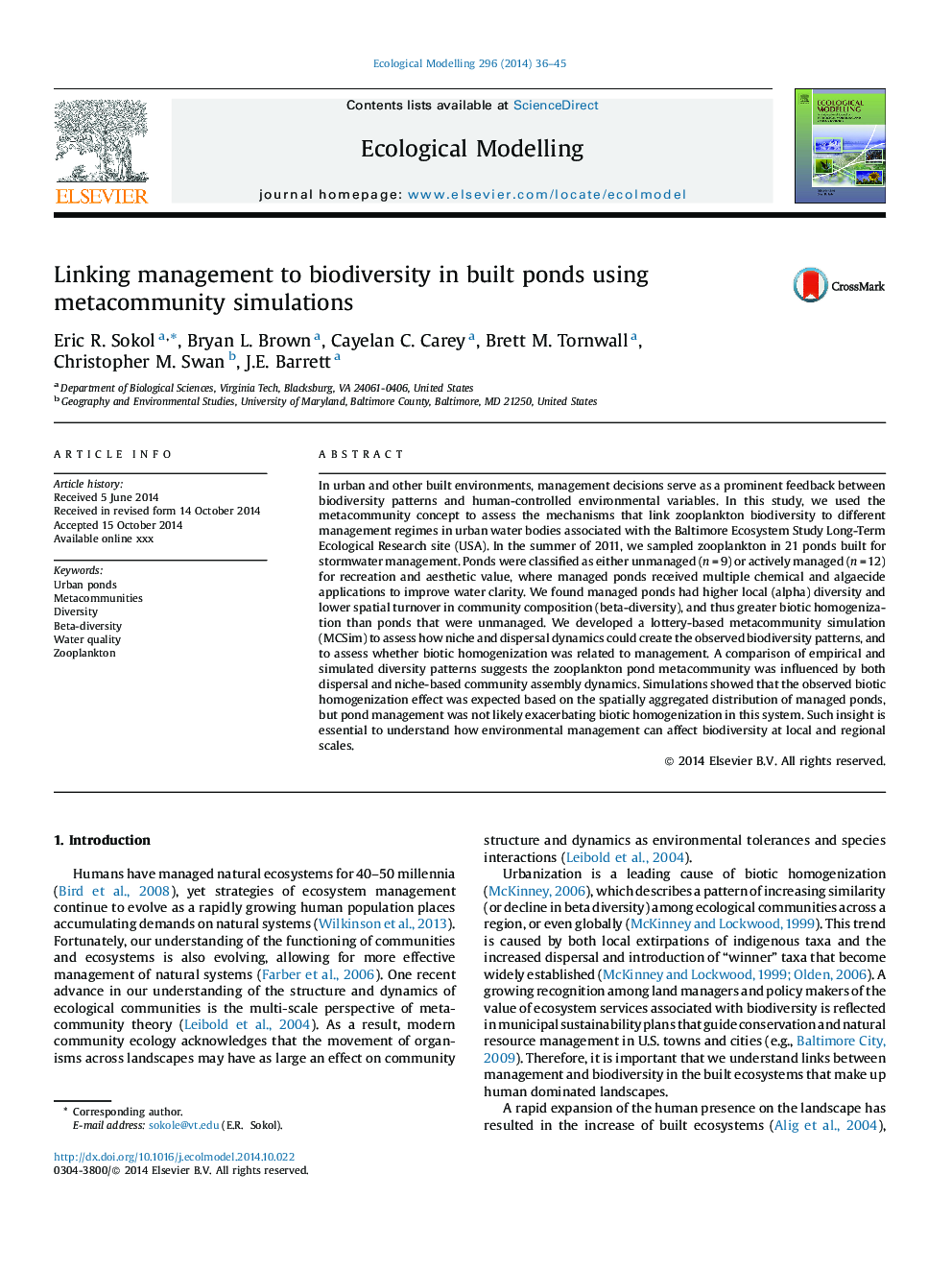| Article ID | Journal | Published Year | Pages | File Type |
|---|---|---|---|---|
| 6296798 | Ecological Modelling | 2015 | 10 Pages |
Abstract
In urban and other built environments, management decisions serve as a prominent feedback between biodiversity patterns and human-controlled environmental variables. In this study, we used the metacommunity concept to assess the mechanisms that link zooplankton biodiversity to different management regimes in urban water bodies associated with the Baltimore Ecosystem Study Long-Term Ecological Research site (USA). In the summer of 2011, we sampled zooplankton in 21 ponds built for stormwater management. Ponds were classified as either unmanaged (n = 9) or actively managed (n = 12) for recreation and aesthetic value, where managed ponds received multiple chemical and algaecide applications to improve water clarity. We found managed ponds had higher local (alpha) diversity and lower spatial turnover in community composition (beta-diversity), and thus greater biotic homogenization than ponds that were unmanaged. We developed a lottery-based metacommunity simulation (MCSim) to assess how niche and dispersal dynamics could create the observed biodiversity patterns, and to assess whether biotic homogenization was related to management. A comparison of empirical and simulated diversity patterns suggests the zooplankton pond metacommunity was influenced by both dispersal and niche-based community assembly dynamics. Simulations showed that the observed biotic homogenization effect was expected based on the spatially aggregated distribution of managed ponds, but pond management was not likely exacerbating biotic homogenization in this system. Such insight is essential to understand how environmental management can affect biodiversity at local and regional scales.
Related Topics
Life Sciences
Agricultural and Biological Sciences
Ecology, Evolution, Behavior and Systematics
Authors
Eric R. Sokol, Bryan L. Brown, Cayelan C. Carey, Brett M. Tornwall, Christopher M. Swan, J.E. Barrett,
